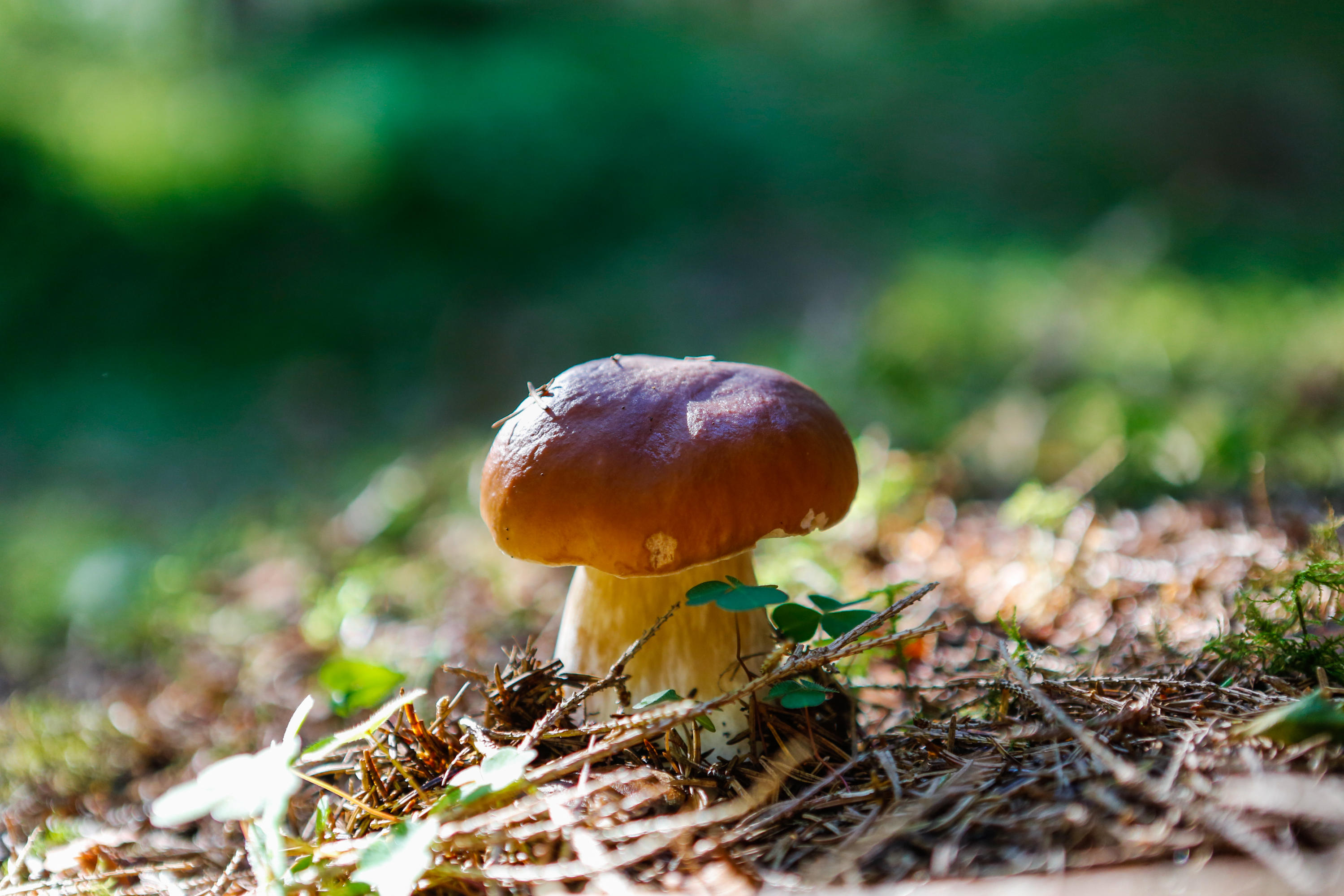The curious world of the penny bun mushroom
Blessed with a vastly superior taste, penny buns are the champions of champignons and the perfect accompaniment to maggots

The penny bun has the near singular quality among fungi of both being edible and looking edible. The English name nicely reflects its appeal — the top of a soft bread roll, complete with dimples.
It is the blessed cèpe of the French, the porcino of the Italians and the steinpilz of the Germans. The French and Italian terms are routinely borrowed in English-speaking countries, a clear indication that Britons learned of this treasure relatively recently, as is the late coinage of the English common name in about 1900.
Before that, if we bothered to call it anything, it was the scientific Boletus edulis, or just ‘boletus’. A proselytising writer in the late 19th century bemoaned ‘… the sweet, nutty Boletus, in vain calling himself edulis where there are none to believe him’. Altogether, it has long been a case of ‘no ceps please, we’re British’.
Further proof of the British ‘insular prejudice’ towards wild fungi is not required, but some stories are too good to forgo. In 1959, two of the clever and opinionated of the mycological world were corralled into a magistrates court in Chichester, West Sussex, as expert witnesses for the respective prosecution and defence of four companies that had spent 25 years innocently making mushroom soup from dried imported penny buns.
'In contravention of domestic guidelines, I have occasionally brought infected specimens home for observation and study. By the final stage, they smell unbelievably awful'
Despite the inarguable fact that penny-bun soup is vastly superior to that made from cultivated mushrooms, the local council was outraged that such foreign fungi were making their way into British stomachs. Penny buns, they said, are not mushrooms. One expert agreed, the other compared the word ‘mushroom’ to ‘fish’, noting that he had often wondered (although not particularly cared) what species of fish it was that accompanied his chips. Evidently of sound mind, the magistrate found for the defence.
The penny bun is by far the most common of four native Boletus species, the others being pine bolete, summer bolete and bronze bolete, all of which are excellent to eat, although the last two are too rare to collect. There were once many more Boletus species, but these have undergone some serious taxonomic revision and now reside in other genera — Neoboletus, for example.
Another such is the bitter bolete, Tylopilus felleus, a species sometimes collected by mistake due to its similarity of browns, creams and general shape. Although not poisonous, one rogue specimen in a dish among 30 penny buns will make it impossible to eat. Incidentally and rather discouragingly, the penny bun has a not-too-distant cousin in Serpula lacrymans, otherwise known as ‘dry rot’.
Exquisite houses, the beauty of Nature, and how to get the most from your life, straight to your inbox.
Among the distinguishing characteristics of the penny bun are a smooth and slightly greasy brown cap, a fine, raised and pale network at the top of the stem and white flesh that turns very slightly pink just below the cap when cut. They can reach 10in in diameter.
All four are found in association with various tree species, chiefly oaks, beech and pines, although they are not reliably fussy. Some people worry a great deal about the over-picking of fungi, but it is not unlike picking apples from a tree. The mushroom is the fruit, the fungus a long-lived underground mass of fibres. Nevertheless, leave many more in the forest than you pick.
Firm young specimens are superb for ceps a la crème and other dishes where texture is important. After that, they gain little dry-weight, but merely expand and are best for soups and sauces or for drying or making a stock powder. There is much debate about what to do with the soft, soggy, olive-green tubes that form under the cap on mature specimens. Frankly, I eat the lot: cap, stem, soggy tubes, maggots and all, but fussier chefs will use them for a mushroom stock. A Danish friend once dried some — they tasted like mushroom crisps.
Penny buns take more cooking than you might imagine — at least 10 minutes — and should be lightly browned. Despite the common understanding, it is technically impossible to overcook mushrooms, as their cells are walled with the uncookable chitin, not cellulose like vegetables.
In addition to slugs and the maggots of fungus gnats (of which there are more than 500 species in Britain), penny buns and related species suffer the attentions of a striking parasite — another fungus, known as the ‘bolete eater’. An infected mushroom is first covered with a thin layer of whitish mould, which then transforms into an astonishingly brilliant-yellow ‘dust’ and finally a blotchy grey-brown.
In contravention of domestic guidelines, I have occasionally brought infected specimens home for observation and study. By the final stage, they smell unbelievably awful.